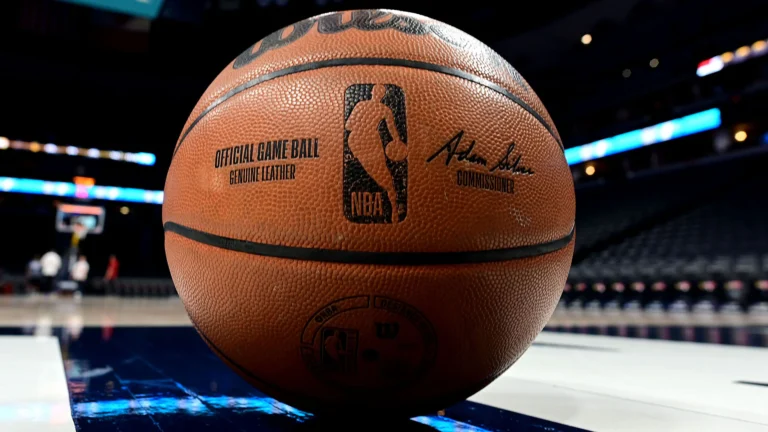
College football in 2025 promises fireworks on the scoreboard. A handful of programs have built rosters designed not just to win games but to overwhelm defenses with relentless tempo and explosive playmaking.
From precision passing attacks to punishing ground games, these offenses highlight how strategy, talent, and innovation collide at the highest level of the sport.
This article examines the nation’s fastest and most dynamic units entering the season, showing how different programs plan to outpace the competition.
While each team has question marks, their collective ability to push the pace makes them must-watch every Saturday. Fans should expect a fall packed with highlight reels, breakneck drives, and plenty of touchdowns.
Clemson’s Aerial Precision Meets Offensive Depth
Clemson enters 2025 with the nation’s most balanced and dangerous offense. Cade Klubnik, ranked by PFF (Pro Football Focus, a well-respected sports analytics company) as its pick for top quarterback, leads a passing attack supported by the country’s third-best receiving corps.
That dual strength sets Clemson apart, as no other team placed inside the top five for both positions. Continuity adds another layer: five of six offensive linemen who logged 500 snaps return, giving the Tigers stability in protection.
The one uncertainty lies in the backfield, where freshman Gideon Davidson steps into the starting role. Still, his pedigree as the No. 4 running back recruit nationally suggests immediate impact.
Clemson’s combination of elite quarterback play, proven receivers, and strong blocking should produce a blistering pace, forcing opponents to keep up or fall behind quickly.
Penn State’s Balanced Attack and Running Back Depth
While Clemson leans on passing fireworks, Penn State boasts the most complete offense in college football. The Nittany Lions appear on every major positional ranking: quarterback, running back, receivers, and offensive line.
Their backfield is unmatched, featuring Nicholas Singleton and Kaytron Allen, two of the top six running backs nationally. Quarterback Drew Allar, ranked No. 4 by PFF, ensures the passing game will complement the run-heavy foundation.
To solve recent struggles at wide receiver, Penn State tapped the transfer portal, adding Trebor Pena, Devonte Ross, and Kyron Hudson. This balance makes them capable of sustaining long drives and striking quickly when opportunities arise.
For fans tracking the evolution of College football, Penn State represents the modern blueprint: depth, versatility, and adaptability across every offensive dimension.
Texas and the Arch Manning Era
All eyes are on Texas as the Arch Manning era begins in earnest. Despite limited experience, Manning is already a Heisman favorite, carrying an 88.0 PFF grade on just 233 snaps.
His supporting cast is formidable, with a top-three running back unit and eighth-ranked receiving corps. However, the offensive line faces a major reset after losing four of five starters.
Young linemen like Trevor Goosby and Brandon Baker must adjust quickly if the Longhorns are to maximize their tempo. If the blocking holds, Texas could transform into a scoring juggernaut, blending star power with youthful energy. The storyline surrounding Manning ensures the Longhorns will be one of the most-watched teams of 2025, making every offensive series feel like a national spotlight moment.
Alabama’s Dominant Line and Explosive Receivers
Alabama remains synonymous with offensive excellence, and 2025 looks no different. The Crimson Tide’s greatest asset is their offensive line, ranked No. 1 nationally, anchored by stars Kadyn Proctor, Parker Brailsford, and Jaeden Roberts.
That dominance up front should give their new quarterback the time needed to settle into the role. Sophomore receiver Ryan Williams, considered the nation’s second-best wideout, headlines a loaded receiving group ranked fifth overall.
Alabama’s running back depth provides yet another weapon, ensuring they can shift gears between tempo-driven passing and power running. The uncertainty at quarterback may create early hiccups, but the supporting talent across the line and receivers positions the Tide to keep defenses on their heels.
Expect Alabama’s offensive drives to showcase controlled speed, built on the foundation of unmatched blocking.
Florida’s Rising Star at Quarterback
Florida’s future rests on the arm of DJ Lagway, PFF’s No. 7 quarterback entering his sophomore year. He already demonstrated elite potential, posting an 8.8% big-time throw rate—best among Power Four quarterbacks as a freshman.
The Gators’ offensive line, anchored by standout center Jake Slaughter, ranks in the nation’s top five, giving Lagway reliable protection. Surrounding talent includes receiver Eugene Wilson III and promising running back Jadan Baugh, both poised for breakout seasons.
Florida’s ability to combine efficient line play with explosive skill players makes them particularly dangerous in hurry-up situations. If Lagway continues to refine his decision-making, the Gators could emerge as one of the nation’s fastest-rising offenses.
For defenses across the SEC, containing Florida may mean choosing between stopping the deep ball or bracing for punishing runs.
LSU’s Firepower Versus Blocking Questions
Few offenses embody high-risk, high-reward potential like LSU’s 2025 unit. Quarterback Garrett Nussmeier ranks among the nation’s top five after finishing last season inside the top ten for both passing yards and big-time throws.
His ability to stretch defenses vertically is supported by a seventh-ranked receiving corps and capable running backs. Yet, the offensive line remains a known unknown.
LSU lost four starters, including Will Campbell, a top-five NFL draft pick. Whether new linemen can gel quickly will determine how often Nussmeier gets the time he needs. If the blocking stabilizes, the Tigers could match any team’s tempo. Without it, their explosive potential may remain untapped.
LSU represents a fascinating case study in how offensive rhythm often depends less on quarterbacks and more on the trenches protecting them.
This Season’s Offensive Landscape
Looking ahead, the 2025 season promises to highlight just how varied offensive philosophies can be when played at speed.
Clemson and Texas emphasize quarterback-led fireworks, while Penn State and Florida showcase balanced, adaptable systems. Alabama relies on dominant line play to fuel its tempo, while LSU’s fate rests on how quickly its rebuilt blockers develop.
What unites them all is a shared ability to pressure defenses with relentless pace. Fans should expect shorter possessions, higher scoring, and more dramatic swings in momentum than ever before.
For viewers, the thrill comes not only from the points but also from witnessing how different programs interpret the same challenge: how to move the ball as fast and as effectively as possible.
*Content reflects information available as of 2025/09/01; subject to change.
Author Profile

Latest entries
 NBADecember 26, 2025The Grinch in OKC: Fox and Wembanyama Stun Thunder to Snap 14-0 Home Streak
NBADecember 26, 2025The Grinch in OKC: Fox and Wembanyama Stun Thunder to Snap 14-0 Home Streak NBADecember 26, 2025Miracle on 33rd Street: Brunson and Bench Mob Erase 17-Point Hole to Stun Cavs
NBADecember 26, 2025Miracle on 33rd Street: Brunson and Bench Mob Erase 17-Point Hole to Stun Cavs NBADecember 26, 2025Beyond the Triple-Double: Jokic’s 56-Point Masterpiece Rewrites Christmas History
NBADecember 26, 2025Beyond the Triple-Double: Jokic’s 56-Point Masterpiece Rewrites Christmas History NFLDecember 26, 2025NFL Christmas Thrills: Dallas Survives a Scare, Detroit Falls Out, and Denver Dominates the Cold
NFLDecember 26, 2025NFL Christmas Thrills: Dallas Survives a Scare, Detroit Falls Out, and Denver Dominates the Cold

 Steelersforever.org
Steelersforever.org





